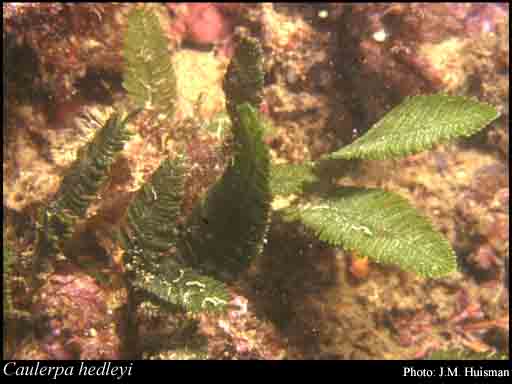- Reference
- Annales de l'Institut Oceanographique 1; pl I, figs 1-4 (1910)
- Conservation Code
- Not threatened
- Naturalised Status
- Native to Western Australia
- Name Status
- Current

Scientific Description
Habit and structure. Stolon robust, 1.5–2.5 mm in diameter, covered by a dense, compact layer (200–300 µm thick) of branched, tapering, spinous-tipped ramuli, probably epilithic. Erect fronds medium grey-green, with simple or occasionally branched axes 3–8 cm high and 1–3 cm across, axes (0.5–)1–2 mm thick, bearing alternately distichous and closely arranged second-order laterals above the basal 0.5–3 cm; second-order laterals 0.7–1.3 mm thick with axes about 0.3 mm thick. Ramuli densely covering all parts of the axes and second-order laterals, 0.2–0.5 mm long, several times branched, 50–75 µm in diameter near their base and tapering evenly to spinous tips.
Distribution. Known from Rottnest I., W. Aust., and the Isles of St Francis, Pearson I., and Investigator Strait, S. Aust.
Habitat. Usually in deep water or heavily shaded.
[After Womersley, Mar. Benthic Fl. Southern Australia I: 268 (1984)]
Distribution
- IBRA Regions
- Esperance Plains.
- IBRA Subregions
- Recherche.
- IMCRA Regions
- Central West Coast, Leeuwin-Naturaliste, WA South Coast.
- Local Government Areas (LGAs)
- Cockburn, Esperance, Wanneroo.